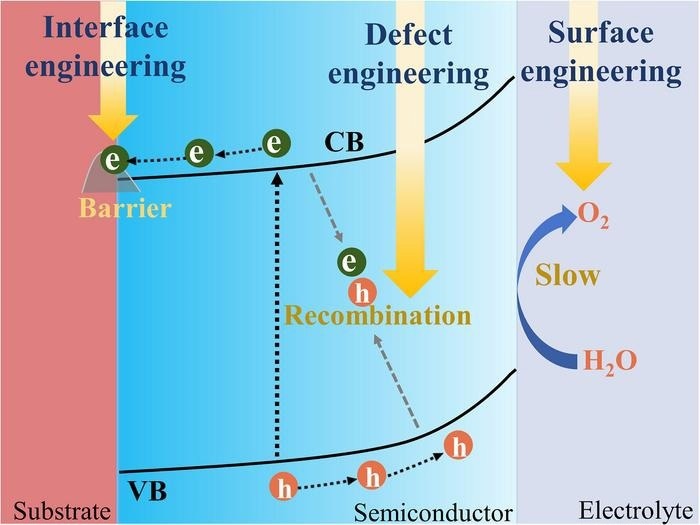Professor Yanbo Li and Dr. Beibei Zhang from the Institute of Fundamental and Frontier Sciences, University of Electronic Science and Technology of China, have been focusing on improving the efficiency of the three core processes in photoelectrocatalysis: surface catalytic conversion, light absorption, and photogenerated carrier separation. The study was published in the journal Science China Chemistry.

With the interface, defect, and surface engineering strategies, the half-cell STH efficiency record of Ta3N5 photoanode has been progressively improved. Image Credit: Science China Press
Li's team has improved the Ta3N5 photoanode's half-cell solar-to-hydrogen conversion efficiency record, emphasizing the following important points:
- They clarified how Ta3N5's performance-limiting deep-level defects occur and offered suggestions for enhancing performance.
- They designed a gradient Mg doping profile matching the defect distribution and created a gradient band structure that increased the effectiveness of bulk charge separation.
- La doping improves near-band-edge light absorption by reducing anisotropic optical absorption. A heterogeneous La/Mg doping approach was suggested to decouple carrier transport from light absorption.
- Through interface engineering, NbNx@Mg: Ta3N5 core-shell NRs and the In GaN/Ta3N5/Mg: GaN planar heterojunction were built, increasing the efficiency of interfacial charge extraction.
- An innovative self-healing mechanism was designed, and a self-healing NiCoFe-Bi catalyst with a unique thickness self-limiting property was created, making it perfect for PEC applications.
These developments promise to further enhance the stability and efficiency of photoelectrochemical (PEC) water-splitting systems and constitute noteworthy contributions to photoelectrocatalysis.
Significantly, the Ta3N5 photoanode's efficiency has increased to a record-high level of more than 4 %. These scientific developments, which also have significant guiding implications for the field's future growth, should further enhance the efficiency and stability of PEC water-splitting systems.
Journal Reference:
Zhang, B., et al. (2024) Engineering tantalum nitride for efficient photoelectrochemical water splitting. Science China Chemistry. doi.org/10.1007/s11426-024-2058-9.